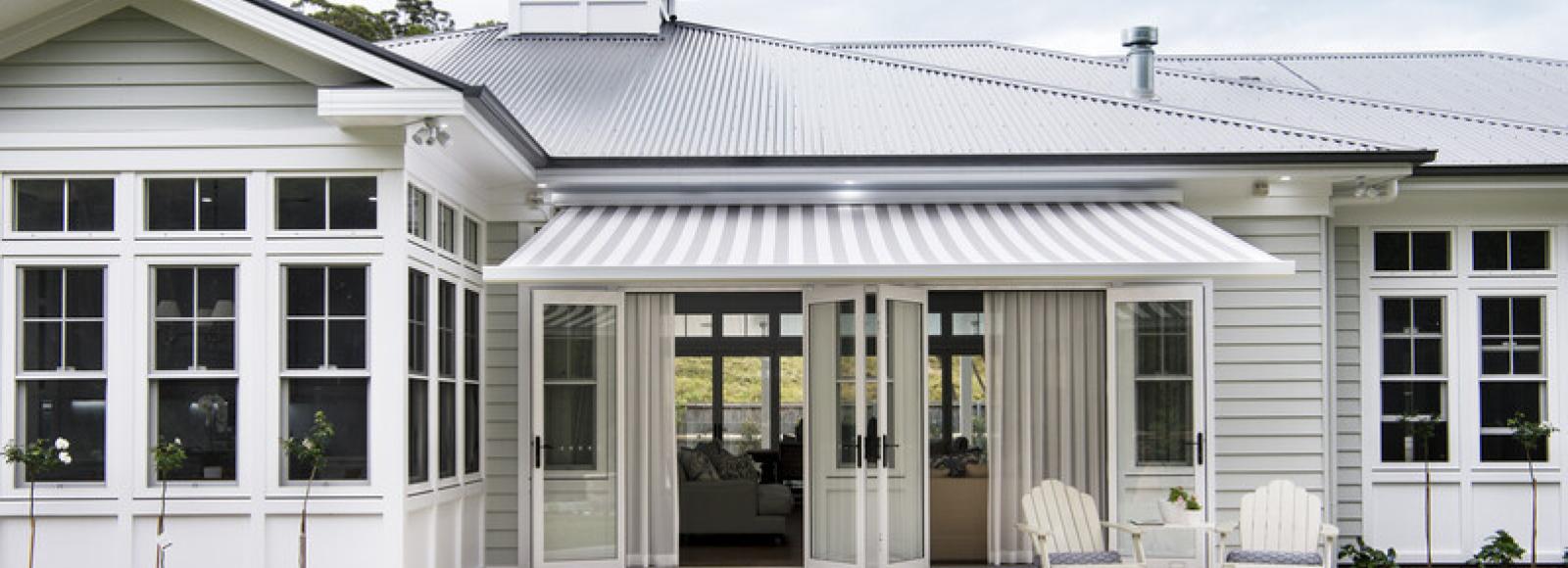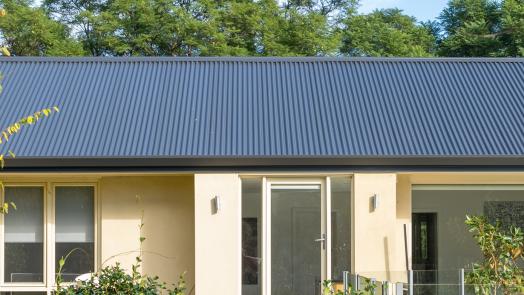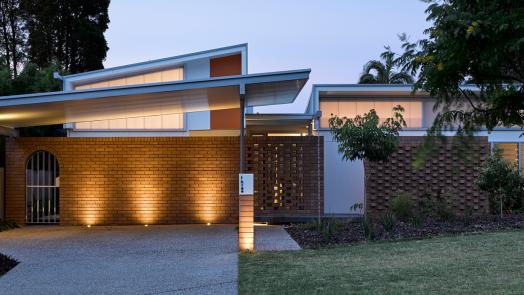
WHY IS ROOF PITCH IMPORTANT?
A roof’s pitch – the angle at which it rises to join at the ridge – has many effects on a home.
For most homeowners, their first consideration when choosing a roof type and pitch is purely aesthetic. They may prefer a flatter roof, a steeper gable style, or perhaps place each way bet with a skillion or raked roof – their choice will depend a lot on the style of their build and what complements the rest of the home.
Visual preference aside though, there are quite a few other things to keep in mind when deciding on a roof pitch. Let’s look at a few.
FUNCTIONALITY
As well as keeping the rain out and helping to regulate temperature in both the colder and warmer months, roof pitch will dictate what can be fitted within the ceiling cavity in terms of HVAC (heating, ventilation, and air conditioning). Some heating units, compressors and associated ducting can be quite bulky, meaning considerable space might be needed in the ceiling cavity. If it doesn’t fit, some of this equipment may need to be placed outside the home, taking up yard space.
Another roof pitch consideration is if you’re thinking about fitting solar panels. While solar can be installed to roofs of various pitches, there are angles that will give optimum performance – these vary depending on where you live around Australia and your position towards the sun.
Typically, if you have a flatter roof pitch, your installer will need to fit ‘tilt frames’. These help to better direct the panels towards the sun, to ensure that the solar system is capturing as much sunlight as possible and for the longest time throughout the day.
In a positive for flatter roofs, they help keep down the overall height of the building – this might be needed to meet local government planning requirements for building heights and to reduce the roofline shadows that are cast onto neighbouring properties.
COST
Roof pitch will also affect building costs, especially the cost of materials – a roof with a greater pitch has a larger surface area, so quite simply - more steel sheeting is needed. Underneath a pitched roof, extra framing is also required as you’re raising the frame higher.
If the roof is heavily pitched, sheeting it may be more time consuming because of the added safety precautions that are needed, this will likely increase labour costs and associated expenses such as extra safety systems, additional scaffolding or access equipment hire.
DRAINAGE
One of the most important things to consider when choosing a roof pitch is drainage performance. The steeper the roof, the faster the roof can disperse the water, meaning there’s less likelihood of leaking.
In contrast, under heavy rainwater rainwater can pool on a flatter roof, and if the roof isn’t paired with the correct gutters or downpipes, there may be water ingress. The fact that flatter roofs also take longer to disperse water means that added weight and pressure may be placed on the substructure.
Lysaght offer a range of downloadable guides on its website that helps installers design a roof drainage system taking into consideration roof style and pitch, roof catchment area, style of rainwater goods used and the location of the home.
WIND AND FIRE RESISTANCE
Those living in cyclonic, or bushfire prone areas should also know what style and pitch of roof is best to resist these weather events. If the region has a ‘C’ rating (C refers to cyclonic) a limit may be placed on roof heights and overhangs. Building in C regions will also affect how the roof is installed, normally requiring more fixings and special fasteners.
For regions where a BAL (Bushfire Attack level) applies, a simple continuous roof design is recommended. Flatter roofs can trap flammable debris and embers on buildings and against facades. Roof shapes with a pitch of 18° or greater will help flush debris.
Flat, highly pitched, or somewhere in between, roof design is about much more than just the look.
LYSAGHT® roofing made from COLORBOND® steel offers a range of profiles, or shapes. Each shape is suitable down to a minimum recommended roof pitch, meaning certain profiles may only by suitable for the roof style you choose for your home.
Our most popular residential roof profile, CUSTOM ORB®, is suitable down to a minimum roof pitch of 5°, making it a perfect choice for typical hip and gable style roofs. For flat sections of roofing, including skillion roofs, porches, and verandahs, consider a profile such as TRIMDEK® or KLIP-LOK®.
If you’re after a more premium-looking roof, consider our ZENITH® range, with profile options down to a minimum roof pitch of 1°.


